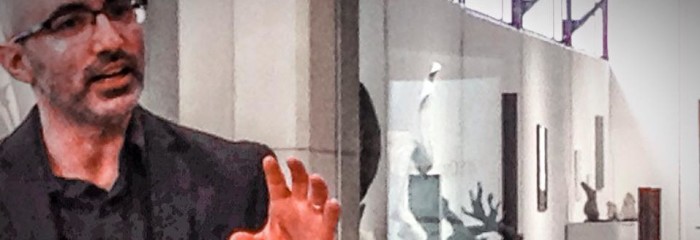Public Speaking

I had the opportunity to speak to the New Haven Rotary Club during a lunch meeting at The Gallery at Elemar in New Haven, CT. It was a very cold day. Only a few came to the lunch because many people is out of state or inside their houses. Truly it is very cold out there. Nevertheless, it was a good group of people. It is the second group this week where there are more men than women. The previous night I had a painting party with equal number of men and women. Believe me, that is very rare for me. Generally, there are more women or no men at all. What does it have to do with public speaking? Honestly, I have no idea.
The important thing here is the satisfaction of sharing about the healing and learning benefits of art with this fine group of individuals. Public speaking is one of my passions. Speaking about art and cognitive psychology is a great combination for me. Public speaking reminds me of my stand up comedy days. The difference now is that the approach is a little more serious. Being able to speak to people about the things I am passionate about is exhilarating and so much fun. The interaction with people is great too; the questions, the comments, the interest and the considerations. It is all great.
March 13th I go back to the gallery to speak about online media tips for artists. This is going to be fun. In the meantime I keep busy with revising the book, the art, and the sculpting and painting parties, along with a lot of personal stuff. At the same time I remain available to speak at groups and organizations. I hope to continue providing a fresh look at art not only as a profession, but also as a connection to our existence. There is so much to learn about people and so many things that can be done with art and through art.

 What is Cognitive Psychology? Cognitive psychology in simple terms is the science that studies how the mind works. Pretty simple, right? For example, it tries to understand how we memorize things and how to remember. It also tries to understand how we perceive and make sense of information or environmental cues. It helps understand how we develop language skills, how conceptual thinking is developed, and how we make decisions. What we see, hear, touch, taste, feel, and imagine is information. In a sense, cognitive psychology deals with the ‘abstract’ functions of the brain and how it processes the information.
What is Cognitive Psychology? Cognitive psychology in simple terms is the science that studies how the mind works. Pretty simple, right? For example, it tries to understand how we memorize things and how to remember. It also tries to understand how we perceive and make sense of information or environmental cues. It helps understand how we develop language skills, how conceptual thinking is developed, and how we make decisions. What we see, hear, touch, taste, feel, and imagine is information. In a sense, cognitive psychology deals with the ‘abstract’ functions of the brain and how it processes the information. Writing a blog is like singing in the shower. You sing like no one is listening because most probably that’s the truth. Even if people are listening you don’t care. That’s your time to flex your pipes and let it out even if you don’t know how to sing. There is no program either. You don’t plan the songs you are going to sing in the shower ahead of time. Whatever song comes to mind you go with it. If you don’t remember the lyrics it doesn’t matter either. You make them up as you go. You mix up songs just for fun. It is your own private concert where you are performer and audience.
Writing a blog is like singing in the shower. You sing like no one is listening because most probably that’s the truth. Even if people are listening you don’t care. That’s your time to flex your pipes and let it out even if you don’t know how to sing. There is no program either. You don’t plan the songs you are going to sing in the shower ahead of time. Whatever song comes to mind you go with it. If you don’t remember the lyrics it doesn’t matter either. You make them up as you go. You mix up songs just for fun. It is your own private concert where you are performer and audience.
The Journey of the Creative Mind
The Artist at Work
Art looks like a destination. Art looks like a journey. Art looks like both. There are many physical processes involved in the creation of art. The eyes, the hands, and body movements combine to develop what can be called ‘technique’. Technique is connected to the non-physical world of the mind. What are we thinking when we create? That is considering the premise that we need to be actively thinking in order to exist according to René Descartes’ “je pense, donc je suis” (I think, therefore I am). What are we feeling? Considering that we are also emotional beings and feelings are our connection to a physical world. What are the antecedents that provoke those things? That is accepting that we are influenced by something or someone triggering thoughts, feelings or ideas that are now materializing in our art. Are there ‘energies’ outside the physical brain motivating creativity? That is the concept of the ancient Greeks’ muses and the conception that inspiration comes from outside of us.
Humans are always trying to explain abstract ideas in a ‘concrete’ manner even though language itself is an abstraction. Moreover, I believe writing is not a way of making the idea concrete but a visual way to make it abstract. The idea becomes a sound and the sound received visual symbols we call ‘letters’ which consequently forms an alphabet. We form words with them providing a visualization of the idea. Cognitive psychology attempts to explain this phenomena. In instructional design we pay attention to learning concepts that help us design learning activities. Concepts as making sense, consciousness, perception, reflection, intention, action, and so on. Psychoanalysis, made famous by Sigmund Freud, explores what I am going to call ‘the dark side of the moon’. In psychoanalysis the focus is on what happens in a conscious state but in the unconscious mind. Concepts like subliminal messages, dreams, suppressed memories, instincts, and other factors that connects us to the conscious world with an unconscious root. Think of Salvador Dalí and surrealism.
We can try to explain or map the journey of the creative mind and we will always fall short of explaining its full ‘reality’. We can take a piece of art as a destination and trace back the steps to the beginning of time in an attempt to explain creativity by its result. I will argue that the artwork is not the result or the destination of the creative mind more mostly a souvenir from the trip like that card, t-shirt, or the famous coffee mug we get as a memory. Creativity is much more powerful than its result. There might be more happening in the subconscious mind than what is happening in the conscious mind when art is created. The journey of the creative mind is not to be fully explained or understood but to be enjoyed and experienced. It is what we talk about to entertain ourselves with the possibilities and not to prove a point. We just enjoy the trip, the memories, and the souvenirs.